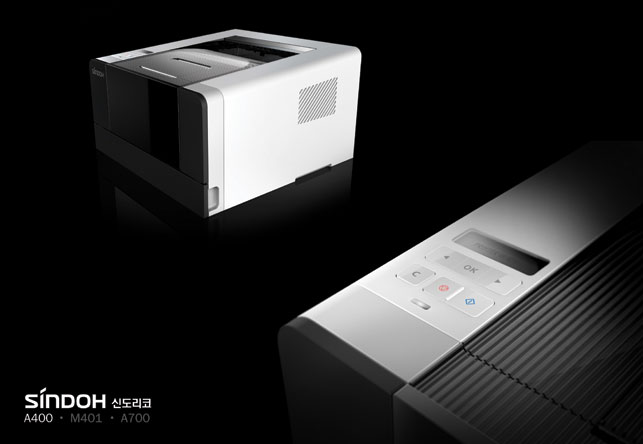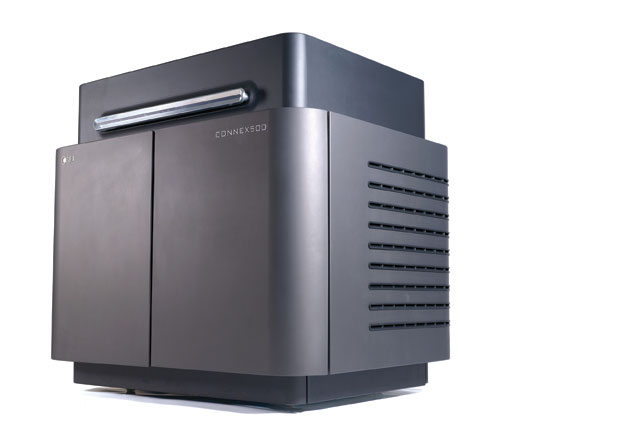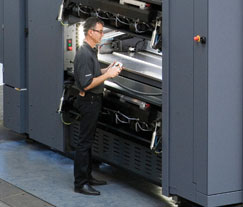Office romance
It’s unlikely anyone has fallen in love with an office printer – functional, grey plastic with coffee stains and a layer of dust – but design outfit Tangerine is trying to change this.

South Korean firm Sindoh has been making printers for Xerox and Ricoh for over 50 years, but a recent rebranding meant it wanted to launch its own products, so Tangerine set about redefining the office printer.
“Behind the concept was that it is a very dynamic printer, and we wanted to represent that through its compactness,” begins Tangerine’s project director Young Choo.
“If you look at other printers it looks like they just wrap up packages around the machine – random bits bulge and pop up and they look like robots!
“We tried to make it very flat, so it looks compact and fitted to your environment. Also, the printer is part of your office furniture, and people hang around the printers a lot – they put their papers on top of the printers, put their pens on it, so we tried to make it as flat as possible so you can use it as a worktop.”
As its first ‘named’ product Sindoh had a strict brief, supplying the internal spec for the mechanics for Tangerine to work around. Using its concepts, 3D models were designed in Pro/Engineer, which is used for its ability to create a variety of forms with a range of complexity.
Once the design was confirmed 1:1 models were made in South Korea, finished to actual likeness with clean lines and black and white colour scheme. After an intensive, in-depth review by Sindoh’s engineers looking at functionality of angles and dimensions, it was ready for production.
“We’re used with working on a lot of phones and IT equipment – office equipment is new and sounds a little boring, but there’s a lot of opportunities, because there’s so many technologies being merged together,” says Choo. “You can look at it as lots of future opportunities.”
www.tangerine.net |
www.sindoh.com
Objet of affection
Encompassing a build tray size of 500 x 400 x 200mm, Objet’s Connex500 is a serious-sized 3D printer, although that didn’t have its design team trying to skimp down its dimensions.

The Objet Connex500 is a multi-material 3D printer
“These are not toys – we didn’t try to make it small!” explains Igal Zeitun, Objet’s VP of product marketing, and a former member of its in-house design team.
After developing the internal engineering requirements and some initial concepts, the Connex500 was modelled in SolidWorks and its FEA module was used to calculate strength points.
For prototyping throughout the design process, Objet makes use of its own technology and prints scale models for assessment.
A key design feature was the large, glass viewing panel on the top of the machine. “We wanted the user to see the printing process, it’s a magical process,” comments Igal.
www.objet.com
Hot off the press
Designed to be an industry workhorse, the Goss Colorliner CPS has a maximum straight running speed of 90,000 copies per hour.
The industrial print industry is, as a whole, rather slow moving – this equipment costs tens-of-millions of pounds – so the designers concentrate on power usage, print quality, and reliability.
Building the entire system in 3D, the Goss’ design team in Montataire, France, predominantly uses Unigraphics NX4. The model is used to extract details drawings, run part interference detection, check ergonomic functionality and run CFD analysis over all the parts.
For the more complex internal print parts Goss uses its own ‘prediction’ software that can analyse and select better unit dimensions and element sizes for internal electrics to give you a better finish to the daily headlines.
www.gossinternational.com
The design of printers from Sindoh, Objet and Goss International
Default







